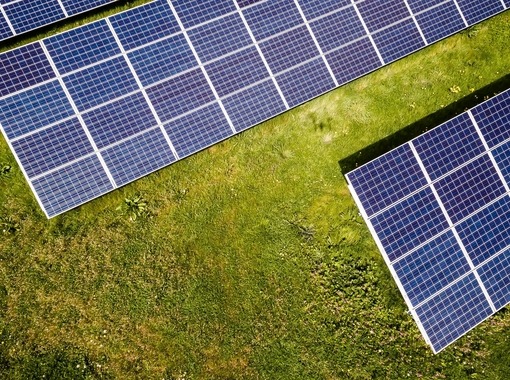Gianluca Levi, a postdoctoral chemistry researcher at the UI Institute of Physical Sciences, in collaboration with an international team of researchers, has been awarded a grant from the European Research Council (ERC) of EUR 1.5 million, equivalent to almost ISK 230 million. This funding will support the development of new methods to help us more effectively harness solar energy. This is the ninth grant that UI scientists have received from the ERC in recent years.
The project is titled “New excited state methods for overcoming challenges in sunlight conversion” (NEXUS) and will run for five years. Basic research projects such as NEXUS are the origin of most modern discoveries and innovations.
Gianluca joined the team of Hannes Jónsson, professor at the UI Faculty of Physical Sciences, as a postdoctoral researcher in 2018 and has been working in research ever since, supported by the Icelandic Research Fund. He has now established his own research group, focusing on the theoretical modelling of excited electronic states of molecules and the experimental study of ultrafast light-induced processes involved in solar energy conversion. Molecules are said to be in an excited state when they absorb light, e.g. from the sun.
Towards more efficient methods to harness solar energy
This research explores processes involved in solar energy conversion akin to natural biochemical phenomena, such as photosynthesis, which plants use to efficiently convert solar energy. These processes involve the rearrangement of electrons and atoms in molecular structures, driven by concentrated packets of energy from the sun in the form of photons. Humans have successfully harnessed solar energy by developing solar cells and systems that mimic photosynthesis to produce energy. However, these devices are not very efficient or cost-effective, in part because we lack a thorough understanding of the processes that take place inside molecules when sunlight is converted into usable energy.
The NEXUS project aims to find out more about these processes using the latest theoretical methods developed by Gianluca and his co-workers. The goal is to gain a better understanding of how atoms and electrons react when they absorb light, including the transfer of electrons within and between molecules as well as changes in molecular structure.
Humans have successfully harnessed solar energy by developing solar cells and systems that mimic photosynthesis to produce energy. However, these devices are not very efficient or cost-effective, in part because we lack a thorough understanding of the processes that take place inside molecules when sunlight is converted into usable energy. image/Andreas Gucklhorn/Unsplash

But how can scientists study phenomena that occur at atomic scales and ultrashort timescales – quadrillionths of a second? Gianluca and his co-workers plan to use quantum mechanical methods developed in collaboration with Professor Hannes Jónsson to model molecules in excited electronic states, i.e. molecules that have absorbed light, triggering the motions of electrons and atoms involved in sunlight conversion. Building on these new methods, the team plans to develop and apply techniques for computer simulation of molecules, exploring how they respond when they absorb light, and how they interact with their environment. The simulations can include thousands of atoms and electrons, and are carried out using high-performance computing clusters, such as the ones provided by the Icelandic High Performance Computing Center (IHPC). Gianluca’s collaborators in Iceland are Hannes Jónsson, as well as Elvar Örn Jónsson, research specialist at the Institute of Physical Sciences.
Part of the study also involves conducting experiments at large-scale X-ray Free Electron Laser facilities to capture snapshots of molecular structures in motion, effectively creating “molecular movies” of atomic and electronic dynamics in real-time. These experiments are conducted in collaboration with Professors Martin M. Nielson and Kristoffer Haldrup, as well as Asmus O. Dohn, scientists at the Technical University of Denmark (DTU) and leading experts in ultrafast science.
The project is expected to yield new computational methods for the scientific community, which will make it possible to more easily and more efficiently simulate the light-induced dynamics of atoms and electrons. “These new tools could potentially accelerate discoveries in fields across chemistry and biology, where photoinduced processes play an important role. Most importantly, the research may lead to the development of cost-effective solar energy harvesting devices, including molecular machines for selective activation of pharmaceutical agents using light, photosensitisers for high-efficiency solar cells, and sustainable catalysts for solar fuel production mimicking natural photosynthesis, a long-standing goal of many research groups,” explains Gianluca.
The ninth ERC grant awarded in a short period
The funding awarded to Gianluca and his team is an ERC Starting Grant, intended to support early-career researchers in Europe working in a wide range of fields. The ERC received almost 3,500 grant proposals this year and competition was fierce, since only 500 applicants were successful.
This grant is the ninth that the ERC has awarded to scientists at UI in recent years; the University’s strategy places particular emphasis on the importance of encouraging grant applications to competitive international funding sources. Besides the grant awarded to Gianluca’s team, the ERC has also funded UI projects in public health sciences, medicine and pharmaceutical sciences, astrophysics, digital humanities, the sociology of education, and linguistics.




